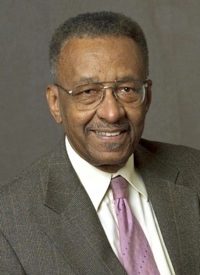
A couple of weeks ago, Black Entertainment Television founder Bob Johnson, speaking at The National Press Club, said the nation “would never tolerate white unemployment at 14 and 15 percent.” Black unemployment has been double that of white Americans for more than 50 years. The black youth unemployment rate is more than 40 percent nationally. In some cities, unemployment for black working-age males is more than 50 percent. Let’s look at this, but first let’s look at some history.
From 1900 to 1954, blacks were more active than whites in the labor market. Until about 1960, black male labor force participation in every age group was equal to or greater than that of whites. During that period, black teen unemployment was roughly equal to or less than white teen unemployment. As early as 1900, the duration of black unemployment was 15 percent shorter than that of whites; today it’s about 30 percent longer. To do something about today’s employment picture requires abandonment of sacred cows and honesty.
The typical answer given for many black problems is racial discrimination. No one argues that every vestige of racial discrimination has been eliminated. But the relevant question is: How much of what we see can be explained by discrimination? I doubt whether anyone would argue that the reason for lower unemployment, higher labor force participation and shorter duration of unemployment among blacks in the first half of the 20th century was that there was less racial discrimination. I also doubt whether anyone would argue that during earlier periods, blacks had higher education and greater skills attainment than whites. Answers must be sought elsewhere.
I was a teenager during the late 1940s, living in North Philadelphia’s Richard Allen housing project. Youngsters in my neighborhood who sought after-school, weekend or summer jobs found them. I picked blueberries in New Jersey, caddied at Cobbs Creek Golf Club, shoveled snow for the Philadelphia Transportation Co., delivered packages for a milliner, performed janitorial work at Horn & Hardart restaurant, and huckstered fruits and vegetables. As a high-school student, Christmas employment for me included after-school and weekend work at Sears, Roebuck and Co.’s mail-order house, and one year, I delivered mail for the U.S. Post Office.
Such opportunities for early work experiences are all but gone for today’s teens living in Richard Allen homes. A major reason is the minimum wage law, which makes hiring low-skilled workers a losing economic proposition. In 1950, only 50 percent of jobs were covered by the minimum wage law. That meant the minimum wage didn’t have today’s unemployment effect. Today nearly 100 percent are covered. Today’s child labor laws prevent youngsters from working in perfectly safe environments. The minimum wage has destroyed many jobs. That’s why, for example, in contrast with the past, today’s gasoline stations are self-service and theater ushers are nonexistent.
Then there are super-minimum wage laws, such as the Davis-Bacon Act, which were written for the express purposes of excluding blacks from government-financed or -assisted construction projects. Labor unions have a long history of discrimination against blacks. Frederick Douglass wrote about this in “The Tyranny, Folly, and Wickedness of Labor Unions,” and Booker T. Washington did so in “The Negro and the Labor Unions.” To the detriment of their constituents, black politicians give support to labor laws pushed by unions and white liberal organizations.
Then there’s education. Black youths are becoming virtually useless for the increasingly high-tech world of the 21st century. According to a 2001 report by Abigail Thernstrom, “The Racial Gap in Academic Achievement,” many black 12th-graders dealt with scientific problems at the level of whites in the sixth grade; they wrote about as well as whites in the eighth grade. The average black high-school senior had math skills on a par with a typical white student in the middle of seventh grade. The average 17-year-old black student could only read as well as the typical white child who had not yet reached age 13. That means an employer hiring the typical black high-school graduate is in effect hiring an eighth-grader.
Walter E. Williams is a professor of economics at George Mason University. To find out more about Walter E. Williams and read features by other Creators Syndicate writers and cartoonists, visit the Creators Syndicate Web page at www.creators.com.
COPYRIGHT 2013 CREATORS.COM



